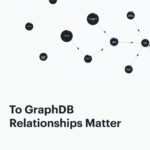
post
December 8, 2021
Conversational Interfaces Scale in Ways GUIs Never Will
Attempts at scaling GUIs, like Sharepoint and Salesforce, ultimately revealed the hard truth that a UI with a hundred tabs designed by as many people is even worse to navigate than it sounds. Salesforce acquired Slack so it could rebuild around a unifying.
It’s true, conversational interfaces aren’t currently the vanguard design solution that was promised. The reason conversational AI feels like a lot of talk is due to low adoption. The technology surrounding conversational AI has become highly sophisticated, but that hasn’t changed the fact that people don’t like pogo sticking between ten different bots. Those poor disconnected experiences feel less productive than doing it the traditional way—piecemeal graphic UIs paired with overlong phone calls with live agents—so users aren’t adopting them. Thankfully, conversational AI is finally being approached by businesses as an integrated solution, and that’s what will change everything.
Unified conversational interfaces
Salesforce didn’t just acquire Slack. Their CEO has openly admitted that they are rebuilding their entire organization around Slack. Microsoft is making a similar bet with Teams: that an integrated communication platform and a unifying conversational interface—one bot that connects to everything—will benefit customers, employees, and organizations in big ways.
Consider something like Photoshop: a powerful and dense piece of software with so many tools and features that even power users might not know how to locate and operate all of them using the robust graphical interface. Now imagine you want to edit a photo and, instead of opening the image in Photoshop and searching for each tool visually, you can tell your device via text or speech, “I want to crop this photo.” A limited tool panel opens showing just the buttons needed to crop an image. Once you finish cropping, you can ask to brighten the image. The crop tools are replaced by those used to adjust brightness and contrast.
Conversational interfaces scale in limitless ways
At present, a great deal of our conversations with machines come in the form of asking smart speakers to issue weather reports or play a desired song. While these are very limited and immature applications of conversational AI, they hint at it’s nascent power. Smart speakers have completely upended the speaker industry, to the point where it might be difficult to find a speaker without built-in conversational capabilities. But how powerful does a smart speaker become when it’s not limited to the things that Siri or Alexa can do? What happens when you can ask your speaker to play “Mr. Roboto” by Styx and then follow up with another request: “I want to buy a copy of the book that Marc Maron mentioned during the intro to his podcast today. I don’t remember the title, but see if there’s a copy available from Powell’s before looking on Amazon.”
A few minutes later, a text message appears on your phone with a link showing a used copy of the book on Powell’s. By replying “Yes. Please buy.” via text, you’re communicating with the same interface—an umbrella conversational interface that has become your primary interaction point with most of the technology in your life. You don’t think of technology in terms of apps on your phone because you so rarely need to open and interact with an app. Domo arigato, indeed.
Graphic UI’s can’t scale to meet new business needs
Operating as this kind of gateway, conversational interfaces can scale in ways that other interfaces simply cannot. There have been attempts to scale GUIs, like Sharepoint and Salesforce, but they ultimately revealed the hard truth that a UI with a hundred tabs designed by as many people is even worse to navigate than it sounds. No doubt, one of the biggest reasons Microsoft is moving from Sharepoint to Teams is the scalability of a conversational interface that’s connected to everything. Customers and employees alike can interact with a company through one portal that ties together and obscures the sausage factory behind the scenes.
For the scenarios we’ve been walking through to come to life, the underlying technologies need to be accessible through a unified interface. None of these experiences will feel better than existing solutions if you have to access them using graphical UIs. Each GUI represents a different piece of software with an isolated design.
Chatbot orchestration behind the curtain
Most existing applications of conversational AI are rudimentary at best. Chatbots that pop up on websites or automated email sends based on prior communications with a company are sad and fragmented applications of a powerful technology. In ideal applications, conversational AI isn’t leveraged in disconnected bits through multiple software platforms. Its true power is as a unifying interface that can access and orchestrate all of the chatbots, apps, passwords, and databases behind the curtain. No more signing into a bank app to transfer money. Just ask for it: “Transfer $200 to savings tomorrow, then use my work bonus to buy another order of dog food from the pet shop.” As more and more of the interfaces we meet each day will require only spoken or typed conversation to connect dots and solve problems in an instant, our daily lives will take on a new dimension. (Not to mention the immediate benefits of detaching our tired retinas from the steady fry of blue-light GUIs.) The amount of time we will save by eliminating extra interactions and relating to technology conversationally will be rewarded ten-fold (or more) by the prowess machines will have for handling complicated tasks with routine efficiency.
Stay up to date
Latest Articles

OneReach.ai Named a Leader in the IDC MarketScape for Conversational AI Software 2023
December 18, 2023



